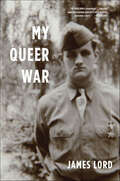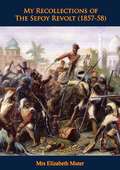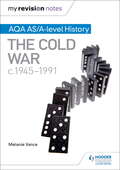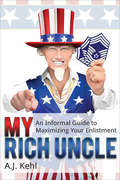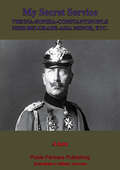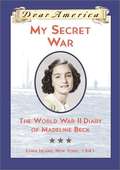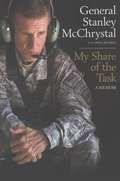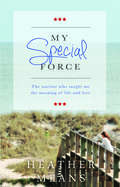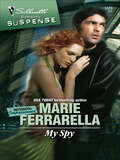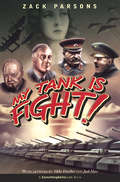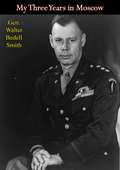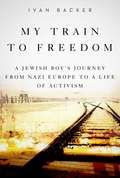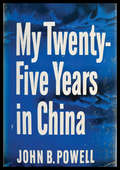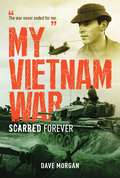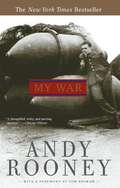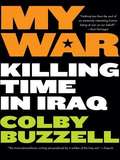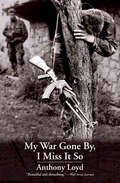- Table View
- List View
My Pen is the Wing of a Bird: New Fiction by Afghan Women
by"Powerful, profound and deeply moving, new fiction by Afghan women writers will expand your mind and elevate your heart" ELIF SHAFAK"Written in simple, direct prose and offers vivid snapshots of a country beset by war and violence . . . It seems more important than ever to read the work of these courageous writers" Financial Times"My pen is the wing of a bird; it will tell you those thoughts we are not allowed to think, those dreams we are not allowed to dream"A woman's fortitude saves her village from disaster. A teenager explores their identity in a moment of quiet. A petition writer reflects on his life as a dog lies nursing her puppies. A tormented girl tries to find love through a horrific act. A headmaster makes his way to work, treading the fine line between life and death."A precious collection of work, the first and maybe the last of its kind. My Pen Is the Wing of a Bird is a huge accomplishment" MONIQUE ROFFEY, author of The Mermaid of Black ConchMy Pen Is the Wing of a Bird is a landmark collection: the first anthology of short fiction by Afghan women. Eighteen writers tell stories that are both unique and universal - stories of family, work, childhood, friendship, war, gender identity and cultural traditions."This book reminds us that everyone has a story. Stories matter; so too the storytellers. Afghan women writers, informed and inspired by their own personal experiences, are best placed to bring us these powerful insights into the lives of Afghans and, most of all, the lives of women. Women's lives, in their own words - they matter." Lyse Doucet in her IntroductionThis collection introduces extraordinary voices from the country's two main linguistic groups (Pashto and Dari) with original, vital and unexpected stories to tell, developed over two years through UNTOLD's Write Afghanistan project. My Pen Is the Wing of a Bird comes at a pivotal moment in Afghanistan's history, when these voices must be heard.With an Introduction by BBC Chief International Correspondent Lyse Doucet and an Afterword by Lucy HannahABOUT UNTOLD UNTOLD is a writer development programme for marginalised writers in areas of conflict and post-conflict. Afghanistan has millions of Pashto and Dari speakers with little or no local support for creative writing, literary translation, or literary editing. Support for writers has been hampered by cultural norms, free expression issues, chronic instability, and internal displacement. UNTOLD has been working one-to-one with women on their short stories, with English-speaking literary editors and translators working with the writers to realise the potential of their stories for publication both locally and globally in translation.
My Philosophy of Industry
by Henry Ford Jr.“My Philosophy of Industry is a book written by Henry Ford, the founder of Ford Motor Company. The book is a collection of essays and speeches given by Ford over the course of his career, in which he outlines his philosophy on business and industry. In the book, Ford emphasizes the importance of efficiency, standardization, and mass production in manufacturing. He also discusses his belief in the value of hard work, innovation, and the importance of treating employees fairly. Throughout the book, Ford shares his vision for the future of industry and the role that businesses can play in creating a better society. He argues that companies should not just be focused on making profits, but should also be committed to improving the lives of their workers and the communities in which they operate. Overall, My Philosophy of Industry is a fascinating look into the mind of one of the most influential business leaders of the 20th century. It offers valuable insights into the principles and practices that helped Ford build one of the world's most successful companies, and provides a roadmap for anyone interested in building a successful business based on ethical and socially responsible principles.”-Print ed.
My Promised Land: The Triumph and Tragedy of Israel
by Ari Shavit<P>WINNER OF THE NATAN BOOK AWARD. <P>An authoritative and deeply personal narrative history of the State of Israel, by one of the most influential journalists writing about the Middle East today. <P>Not since Thomas L. Friedman's groundbreaking From Beirut to Jerusalem has a book captured the essence and the beating heart of the Middle East as keenly and dynamically as My Promised Land. Facing unprecedented internal and external pressures, Israel today is at a moment of existential crisis. <P>Ari Shavit draws on interviews, historical documents, private diaries, and letters, as well as his own family's story, illuminating the pivotal moments of the Zionist century to tell a riveting narrative that is larger than the sum of its parts: both personal and national, both deeply human and of profound historical dimension. <P>We meet Shavit's great-grandfather, a British Zionist who in 1897 visited the Holy Land on a Thomas Cook tour and understood that it was the way of the future for his people; the idealist young farmer who bought land from his Arab neighbor in the 1920s to grow the Jaffa oranges that would create Palestine's booming economy; the visionary youth group leader who, in the 1940s, transformed Masada from the neglected ruins of an extremist sect into a powerful symbol for Zionism; the Palestinian who as a young man in 1948 was driven with his family from his home during the expulsion from Lydda; the immigrant orphans of Europe's Holocaust, who took on menial work and focused on raising their children to become the leaders of the new state; the pragmatic engineer who was instrumental in developing Israel's nuclear program in the 1960s, in the only interview he ever gave; the zealous religious Zionists who started the settler movement in the 1970s; the dot-com entrepreneurs and young men and women behind Tel-Aviv's booming club scene; and today's architects of Israel's foreign policy with Iran, whose nuclear threat looms ominously over the tiny country. <P>As it examines the complexities and contradictions of the Israeli condition, My Promised Land asks difficult but important questions: Why did Israel come to be? How did it come to be? Can Israel survive? Culminating with an analysis of the issues and threats that Israel is currently facing, My Promised Land uses the defining events of the past to shed new light on the present. The result is a landmark portrait of a small, vibrant country living on the edge, whose identity and presence play a crucial role in today's global political landscape.
My Queer War
by James LordA POWERFUL STORY OF SEXUAL AWAKENING DURING THE SECOND WORLD WAR FROM THE NOTED MEMORIST AND CRITIC In My Queer War, James Lord tells the story of a young man's exposure to the terrors, dislocations, and horrors of armed conflict. In 1942, a timid, inexperienced twenty-one-year-old Lord reports to Atlantic City, New Jersey, to enlist in the U. S. Army. His career in the armed forces takes him to Nevada and California, to Boston, to England, and eventually to France and Germany, where he witnesses firsthand the ravages of total war on Europe's land and on its people. Along the way he comes to terms with his own sexuality, experiences the thrill of first love and the chill of disillusionment with his fellow man, and in a moment of great rashness makes the acquaintance of the world's most renowned artist, who will show him the way to a new life. If his war is queer, it is because each man's experience is strange in its own way. His is a story of universal significance and appeal, told by a wry and eloquent observer of the world and of himself.
My Queer War
by James LordA powerful story of sexual awakening during the Second World War, My Queer War, from the noted memoirist and critic James Lord tells the story of a young man's exposure to the terrors, dislocations, and horrors of armed conflict.In 1942, a timid, inexperienced twenty-one-year-old Lord reports to Atlantic City, New Jersey, to enlist in the U.S. Army. His career in the armed forces takes him to Nevada, California, Boston, England, and, eventually, France and Germany, where he witnesses firsthand the ravages of total war on Europe's land and on its people. Along the way he comes to terms with his own sexuality, experiences the thrill of first love and the chill of disillusionment with his fellow man, and in a moment of great rashness makes the acquaintance of the world's most renowned artist, who will show him the way to a new life.My Queer War is a rich and moving record of one man's maturation in the crucible of the greatest war the world has known. If his war is queer, it is because each man's experience is strange in its own way. His is a story of universal significance and appeal, told by a wry and eloquent observer of the world and of himself.
My Recollections of The Sepoy Revolt (1857-58)
by Mrs Elizabeth Muter“Mrs Elizabeth McMullin Muter was married to a captain of the 1st Battalion 60th King's Royal Rifles stationed in Meerut, a few hours travel east of Delhi, when the mutiny among the sepoys of the garrison broke out there on Sunday morning of May 10th, 1857. Elizabeth Muter graphically describes the horrors of those first days of the conflict from the perspective of the wives of officers who were set adrift in times of peril and uncertainty as their husbands left them to fight. This book also contains some campaign recollections by Captain Muter.”-Print ed.
My Revision Notes: AQA AS/A-level History: The Cold War, c1945-1991
by Melanie VanceExam Board: AQALevel: AS/A-levelSubject: HistoryFirst Teaching: September 2015First Exam: June 2016Target success in AQA AS/A-level History with this proven formula for effective, structured revision; key content coverage is combined with exam preparation activities and exam-style questions to create a revision guide that students can rely on to review, strengthen and test their knowledge.- Enables students to plan and manage a successful revision programme using the topic-by-topic planner- Consolidates knowledge with clear and focused content coverage, organised into easy-to-revise chunks- Encourages active revision by closely combining historical content with related activities- Helps students build, practise and enhance their exam skills as they progress through activities set at three different levels- Improves exam technique through exam-style questions with sample answers and commentary from expert authors and teachers- Boosts historical knowledge with a useful glossary and timeline
My Rich Uncle: An Informal Guide to Maximizing Your Enlistment
by A. J. KehlWant to maximize your time in the military? Want to know what it really takes to be successful while serving your country? Ever just want someone to keep it real on the topics that mean the most to you? A.J. Kehl, a Senior Master Sergeant (SMSgt) in the U.S. Air Force, does just that and more in My Rich Uncle: An Informal Guide to Maximizing Your Enlistment. Kehl’s well-crafted guide is designed with one purpose in mind: To make sure you make the most out of your time in the armed forces. Sgt. Kehl distinguishes his book from any other you will read, pointing out all the important things that rarely, if ever, make it to print. Hot items such as promotion, leadership, networking, and traveling make this a must-read for anyone now on active duty, thinking of joining the military, or who has spent time within this unique lifestyle. My Rich Uncle includes an invaluable collection of knowledge, wisdom, and insight from numerous military leaders, all of which is geared toward helping fellow military members find success in their careers. It highlights the cultural things we expect men and women to know, or at least figure out, but which are rarely taught. This book will help you successfully navigate a military career by providing insight into the expectations and the steps for YOU to take in order to maximize your service time and set yourself up for success. It also highlights little known programs, like Air Force Lean and Continuous Process Improvement, that empower members to find root cause solutions and reduce time-wasting practices that do not further your career. My Rich Uncle: An Informal Guide to Maximizing Your Enlistment is written by an airman for men and women in all branches who want to get the most out of their service. “This is a military guide like no other!” — J. Lewis, Command CMSgt (Ret.) “The author has put together a masterpiece collection of knowledge, wisdom, and insight.” — Lt. Col. J. Failing “A recipe for success.” — L. Manley, CMSgt (Ret.)
My Secret Service, Vienna-Sophia-Constantinople-Nish-Belgrade-Asia Minor
by Anon.In 1914, the anonymous author, a journalist by profession with no pretensions to military training, embarked on one of the most outrageous escapades of the First World War as he travelled behind German lines, collecting information on the German war machine. Across Germany, the Balkans and even so far as Turkey, meeting heads of states, ministers and even the Kaiser himself! His story may seem far-fetched, but included in his book (and reproduced with this edition) are a Vienna bread ticket of 1915, the calling card of Halil Bey, and other documents to prove his tale. However, in the modest yet dashing spirit of the times, the author was at pains to point out that "I AM not a spy, that I wish to make abundantly clear; I am a journalist, and I love my profession. Equally well I love adventure and sport, the greatest sport in the world, in which the stake is the player's life."A jaunty read.
My Secret War: The World War II Diary of Madeline Beck (Dear America)
by Mary Pope OsborneThirteen-year-old Madeline Beck's diaries, recorded through 1941 and 1942, reveal her experiences living on Long Island during World War II while her father is away in the Navy. B&W photos and illustrations.
My Share of the Task: A Memoir
by General Stanley Mcchrystal'General McChrystal is a legendary warrior with a fine eye for enduring lessons about leadership, courage, and consequence' -Tom Brokaw General Stanley McChrystal is widely admired for his hunger to know the truth, his courage to find it, and his humility to listen to those around him. Even as the commanding officer of all U.S. and coalition forces in Afghanistan, he stationed himself forward and frequently went on patrols with his troops to experience their challenges firsthand. In this illuminating New York Times bestseller, McChrystal frankly explores the major episodes and controversies of his career. He describes the many outstanding leaders he served with and the handful of bad leaders he learned not to emulate. And he paints a vivid portrait of how the military establishment turned itself, in one generation, into the adaptive, resilient force that would soon be tested in Iraq, Afghanistan, and the wider War on Terror. 'A compelling account of his impressive career' -The Wall Street Journal 'This is a brilliant book about leadership wrapped inside a fascinating personal narrative' -Walter Isaacson, author of Steve Jobs Stanley McChrystal retired in July 2010 as a four-star general in the U.S. Army. His last assignment was as the commander of the International Security Assistance Force and as the commander of U.S. forces in Afghanistan. He is currently a senior fellow at Yale University's Jackson Institute for Global Affairs and cofounder of the McChrystal Group, a leadership consulting firm. He and his wife, Annie, live in Virginia.
My Share of the Task: A Memoir
by Stanley Mcchrystal"Never shall I fail my comrades. ... I will shoulder more than my share of the task, whatever it may be, one hundred percent and then some." --from the Ranger Creed. In early March 2010, General Stanley McChrystal, the commanding officer of all U.S. and coalition forces in Afghanistan, walked with President Hamid Karzai through a small rural bazaar. As Afghan townspeople crowded around them, a Taliban rocket loudly thudded into the ground some distance away. Karzai looked to McChrystal, who shrugged. The two leaders continued greeting the townspeople and listening to their views. That trip was typical of McChrystal's entire career, from his first day as a West Point plebe to his last day as a four-star general. The values he has come to be widely admired for were evident: a hunger to know the truth on the ground, the courage to find it, and the humility to listen to those around him. Even as a senior commander, McChrystal stationed himself forward, and frequently went on patrols with his troops to experience their challenges firsthand. In this illuminating memoir, McChrystal frankly explores the major episodes and controversies of his eventful career. He delves candidly into the intersection of history, leadership, and his own experience to produce a book of enduring value. Joining the troubled post-Vietnam army as a young officer, McChrystal witnessed and participated in some of our military's most difficult struggles. He describes the many outstanding leaders he served with and the handful of bad leaders he learned not to emulate. He paints a vivid portrait of the traditional military establishment that turned itself, in one generation, into the adaptive, resilient force that would soon be tested in Iraq, Afghanistan, and the wider War on Terror. McChrystal spent much of his early career in the world of special operations, at a time when these elite forces became increasingly effective--and necessary. He writes of a fight waged in the shadows by the Joint Special Operations Command (JSOC), which he led from 2003 to 2008. JSOC became one of our most effective counterterrorism weapons, facing off against Al Qaeda in Iraq. Over time, JSOC gathered staggering amounts of intelligence in order to find and remove the most influential and dangerous terrorists, including the leader of Al Qaeda in Iraq, Abu Musab al-Zarqawi. The hunt for Zarqawi drives some of the most gripping scenes in this book, as McChrystal's team grappled with tricky interrogations, advanced but scarce technology, weeks of unbroken surveillance, and agonizing decisions. McChrystal brought the same energy to the war in Afghanistan, where the challenges loomed even larger. His revealing account draws on his close relationships with Afghan leaders, giving readers a unique window into the war and the country. Ultimately, My Share of the Task is about much more than war and peace, terrorism and counterinsurgency. As McChrystal writes, "More by luck than design, I'd been a part of some events, organizations, and efforts that will loom large in history, and more that will not. I saw selfless commitment, petty politics, unspeakable cruelty, and quiet courage in places and quantities that I'd never have imagined. But what I will remember most are the leaders."
My Side of the War: How Meatballs Saved My Life--Dresden, Germany
by Willy A. SchaussAmid this collective of passionate speculation and kind remembrance, this book holds a special place.
My Special Force
by Heather MeansAn inspirational tale of love and war, My Special Force is the true story of a widow and her beloved husband, a life-force who was serving in Iraq, only to be diagnosed with a fatal cancer. Weaving together their actual correspondences with her own narrative, Heather Means tells a story of patriotism, courage, and ultimately the strength of human will.
My Spy (Mission: Impassioned #1)
by Marie FerrarellaDaring, bold, secretive—Joshua Lazlo loved living life on the edge. Rescuing the prime minister's daughter from kidnappers was justthe challenge he thrived on. But nothing prepared him for thewoman who yelled out fiery threats and almost made him forgethis real mission—.Prudence Hill knew she was going to die at the hands of hercaptors—until a powerful stranger swept her from harm's way.Was Joshua her friend or foe? She dared not trust this man even ifher survival depended on him. But once passion flared, Pru couldno longer resist Joshua's sensual embrace—and a love that coulddoom them both.
My Story Of The War: A Woman’s Narrative Of Four Years Personal Experience As Nurse In The Union Army [Illustrated Edition]
by Mary Ashton LivermoreIncludes Civil War Map and Illustrations Pack - 224 battle plans, campaign maps and detailed analyses of actions spanning the entire period of hostilities.The work of the United States Sanitary Commission in aiding the Federal war effort cannot be underestimated. Through its tens of thousands of members spread all across the North, they brought succour and aid to U.S. Army soldiers and particularly their sick and wounded. One of its most distinguished members was Mary Livermore, a seasoned advocate of liberal rights (and after the Civil War, Women's Sufferage), who was at the forefront of the medical effort of the U.S.S.C.Her memoirs in the front-line hospital and wards spanned from the early days of the Civil War at the battle of Shiloh right through to its conclusion. She was also heavily involved in the fund raising efforts of her commission and received backing from the highest sources.
My Tank Is Fight!: Deranged Inventions Of Wwii
by Zack ParsonsSoldiers that fly!Tanks that fly! Cruisers that . . . sink!What Fight Have BeenMy Tank Is Fight! contains a humorous and exciting examination of twenty real inventions from World War II that never saw the light of day. Each entry includes full technical details, a complete development history, in-depth analysis, and a riveting fictionalized account of the invention's success or failure on the battlefield. Lavish color artwork and technical illustrations are falling from the pages of this book like toenails from a trench foot. Dive under the Atlantic in the turreted U-Cruiser, or rule its surface from an aircraft carrier made out of ice. Shred bomber formations in a high-performance flying wing fighter and then rocket to your untimely end from the cockpit of your very own suicide missile. We've got a pair of German armored land vehicles for you that are so large they had to be powered by naval engines! My Tank Is Fight! delivers the thrilling action of the Second World War as it might have been with a touch of humor and a lack of class. Only the slow-witted are reading this anywhere other than in line at the cash register. Ask an adult to help you if you're still not sure you want to buy the book.
My Three Years in Moscow
by Gen. Walter Bedell SmithMY THREE YEARS IN MOSCOW is a good deal more than an account of diplomatic negotiations. General Smith undertook to study the whole framework of Soviet life-the people, their leaders and their institutions. In this study he had the help of a large and well-informed staff and, in addition, he has had the advantage of closer personal contact with Marshal Stalin than any other Westerner.There are vivid portraits of the men who run the Soviet Union, all the way from the members of the all-powerful Politburo to the director of a small collective farm. There are revealing discussions of the efficiency of Soviet industry and agriculture. In the course of his duties General Smith met numbers of Russians of all kinds, and his pages contain fascinating sketches of them, thus building a picture of the life of the ordinary man in a collectivized economy. The American Ambassador had his own housekeeping problems, like the incident of the supply of fresh eggs, which eventually involved ponderous governmental machinery.MY THREE YEARS IN MOSCOW is one of the important books of our time distinguished in its character and permanent in historical value.“…casts more light on the Soviet system, on Marshal Stalin and on the tortuous twists and turns of Soviet policy than anything published thus far.”—The New York Times
My Train to Freedom: A Jewish Boy?s Journey from Nazi Europe to a Life of Activism
by Ivan BackerThe breathtaking memoir by a member of "Nicky’s family,” a group of 669 Czechoslovakian children who escaped the Holocaust through Sir Nicholas Winton’s Kindertransport project, My Train to Freedom relates the trials and achievements of award-winning humanitarian and former Episcopal priest, Ivan Backer. As Backer recounts in his memoir, in May of 1939 as a ten-year-old Jewish boy, he fled Nazi-occupied Czechoslovakia for the United Kingdom aboard one of the Kindertransport trains organized by Nicholas Winton, a young London stockbroker. The final train was canceled September 1 when Hitler invaded Poland. The 250 children scheduled for that train were left on the platform and later transported to concentration camps and presumably perished. Detailed in this page-turning true story is Backer’s dangerous escape, his boyhood in England, his perilous 1944 voyage to America, and his mantra today. Now he is an eighty-six-year-old who remains an activist for peace and justice. He has been influenced by his Jewish heritage, his Christian boarding school education in England, and the always present question, "For what purpose was I spared the Holocaust?” My Train to Freedom was thoroughly researched and shaped by Backer’s own memories. It includes interviews he conducted in 1980 in Czech with his mother and her sister, later translated into English; a collection of conversations he had with his older brother and cousin; insights gained from the Czech film, Nicky’s Family, about the Kindertransport; and concludes with never-before-published death march accounts by two family members.
My Twenty-Five Years In China
by John B. PowellDuring the two decades ending at Pearl Harbor, Mr. Powell was owner and editor of the China Weekly Review. His opposition to Japanese expansion into China was consistent and bitter, and carried on at great personal risk.His chapters on this phase of recent Chinese history are written at first-hand and are important. It is in his discussion of internal Chinese affairs that he sometimes seems a less reliable guide, being thoroughly committed to Chiang Kai-shek and the Kuomintang.—Robert Gale Woolbert
My Vietnam War: Scarred Forever
by Dave MorganMy Vietnam War is Dave Morgan's story. A typical 20 year old, he was forced into extraordinary circumstances in Vietnam. Far from his carefree youth, the Vietnam War would expose Dave to an atmosphere of ever-present danger and sheer terror that would impact him forever. His return to a divided Australia would isolate him further. During his service Dave wrote home to his mother from Vietnam tracking the days and the events. In 1992, after his mother passed away, he found all of his letters with his own recollections and diary entries, and the short stories of seven other veterans, to capture the unbelievable danger and horror that these young men experienced in Vietnam. He also describes how Vietnam established life-long feelings of intense loyalty, trust and mateship between the men that served there. Dave's story focuses on his time as a soldier and his return psychologically exhausted to a divided nation.
My War
by Andy RooneyMy War is a blunt, funny, idiosyncratic account of Andy Rooney's World War II. As a young, naïve correspondent for The Stars and Stripes, Rooney flew bomber missions, arrived in France during the D-Day invasion, crossed the Rhine with the Allied forces, traveled to Paris for the Liberation, and was one of the first reporters into Buchenwald. Like so many of his generation, Rooney's life was changed forever by the war. He saw life at the extremes of human experience, and wrote about what he observed, making it real to millions of men and women. My War is the story of an inexperienced kid learning the craft of journalism. It is by turns moving, suspenseful, and reflective. And Rooney's unmistakable voice shines through on every page.
My War
by Colby BuzzellAn underemployed, skateboarding party animal, Colby Buzzell traded a dead-end future for the army--and ended up as a machine gunner in Iraq. To make sense of the absurd and frightening events surrounding him, he started writing a blog about the war--and how it differed from the government's official version. But as his blog's popularity grew, Buzzell became the embedded reporter the Army couldn't control--despite its often hilarious efforts to do so. The result is an extraordinary narrative, rich with unforgettable scenes: the Iraqi woman crying uncontrollably during a raid on her home; the soldier too afraid to fight; the troops chain-smoking in a guard tower and counting tracer rounds; the first, fierce firefight against the "men in black." Drawing comparisons to everything from Charles Bukowski to Catch-22, My War depicts a generation caught in a complicated and dangerous world--and marks the debut of a raw, remarkable new voice.
My War Gone By, I Miss It So
by Anthony LoydA “beautiful and disturbing” account of the Bosnian conflict by a war correspondent grappling with heroin addiction and a family legacy of military heroism (The Wall Street Journal). In an earlier era, Anthony Loyd imagines, he would have fought fascism in Spain. Instead, the twenty-six-year-old scion of a distinguished military family left England in 1993 to experience the conflict in Bosnia as a reporter. While he found his time serving in the British army during the Gulf War disappointingly uneventful, Loyd would spend the next three years documenting one of the most callous and chaotic clashes ever fought on European soil. Plunged into the midst of the struggle among the Serbs, Croatians, and Bosnian Muslims, Loyd saw humanity at its extremes, witnessing tragedy daily in city streets and mountain villages. Shocking and violent, yet lyrical and ultimately redemptive, Loyd’s memoir is an uncompromising feat of reportage, and one man’s on-the-ground look at Yugoslavia’s brutal dissolution. But Loyd’s personal war didn’t end after he emerged from the trenches. Addicted to the adrenaline of armed combat, he returned home to continue his own longstanding battle against drug addiction. “Battlefield reportage does not get more up close, gruesome, and personal. . . . The fear and confusion of battle are so vivid that in places, they rise like acrid smoke from the page.” —The New York Times “Loyd’s strongest writing is in his descriptions of carnage—of the sound and smell of shellfire; of the sexual release of blasting away with an automatic machine gun. . . . This is pure war reporting, free from the usual journalistic constraints that often give a false significance to suffering.” —Salon.com “First-rate war correspondence . . . [in] the great tradition of Hemingway, Caputo, and Michael Herr.” —The Boston Globe
My War Memoirs
by Dr Edvard BenešThe Czechoslovak minister of foreign affairs tells a detailed story of the revolutionary movement of the Czechs that led to the building of the new state, in the government of which he and President Masaryk have become the leaders.“THIS book contains a record of my wartime experiences. Life moves so rapidly that the approach of new political events is apt to make us forget the old ones too easily. Much of what I saw and heard during the war deserves to be remembered, and that is why I have decided to wait no longer, but to tell the story of our revolutionary movement now. This book will be supplemented by later works on the Peace Conference and on our post-war foreign policy, for my work during the war and subsequently as Czechoslovak Foreign Minister forms an inseparable whole.”-Introduction




